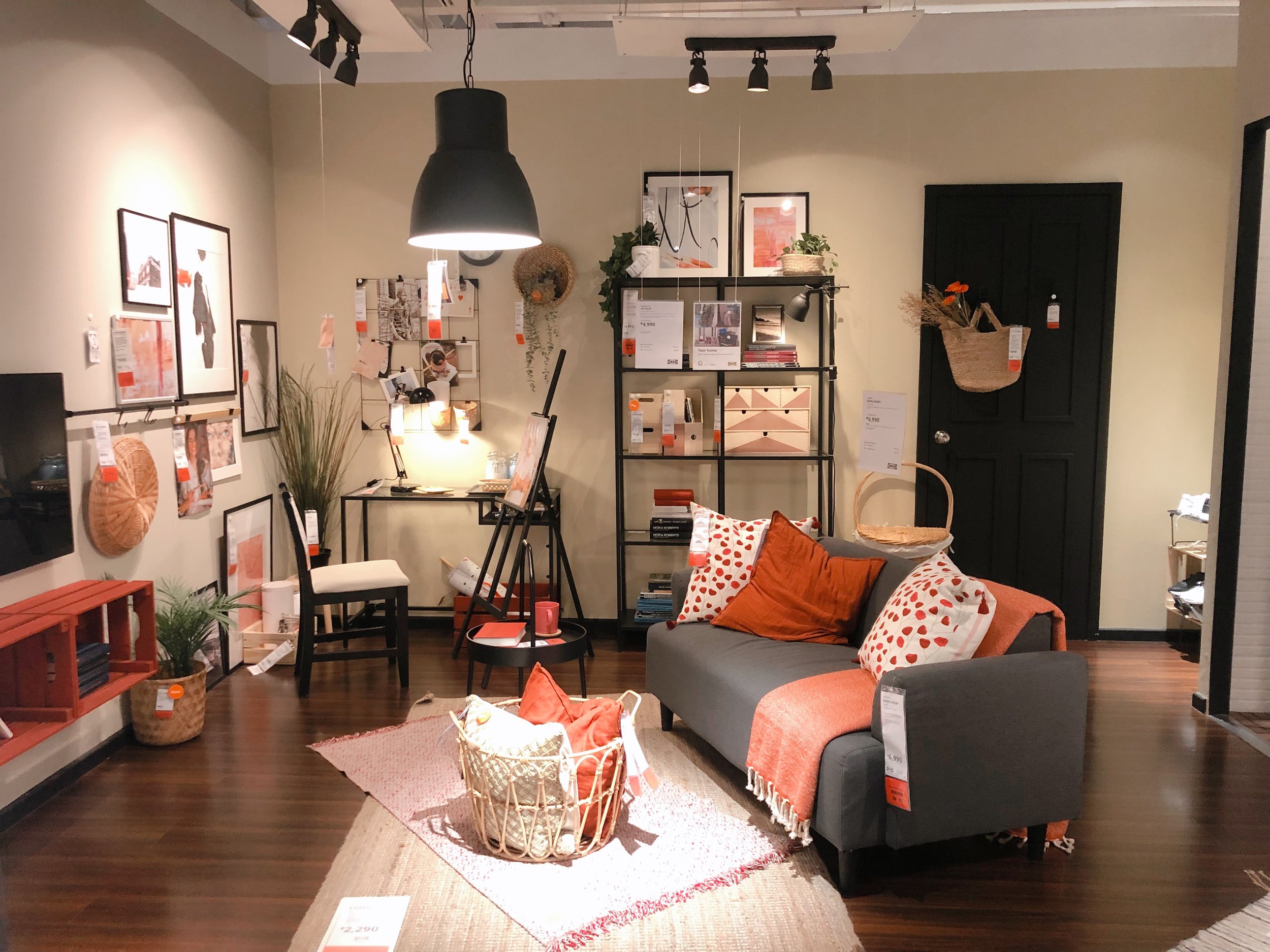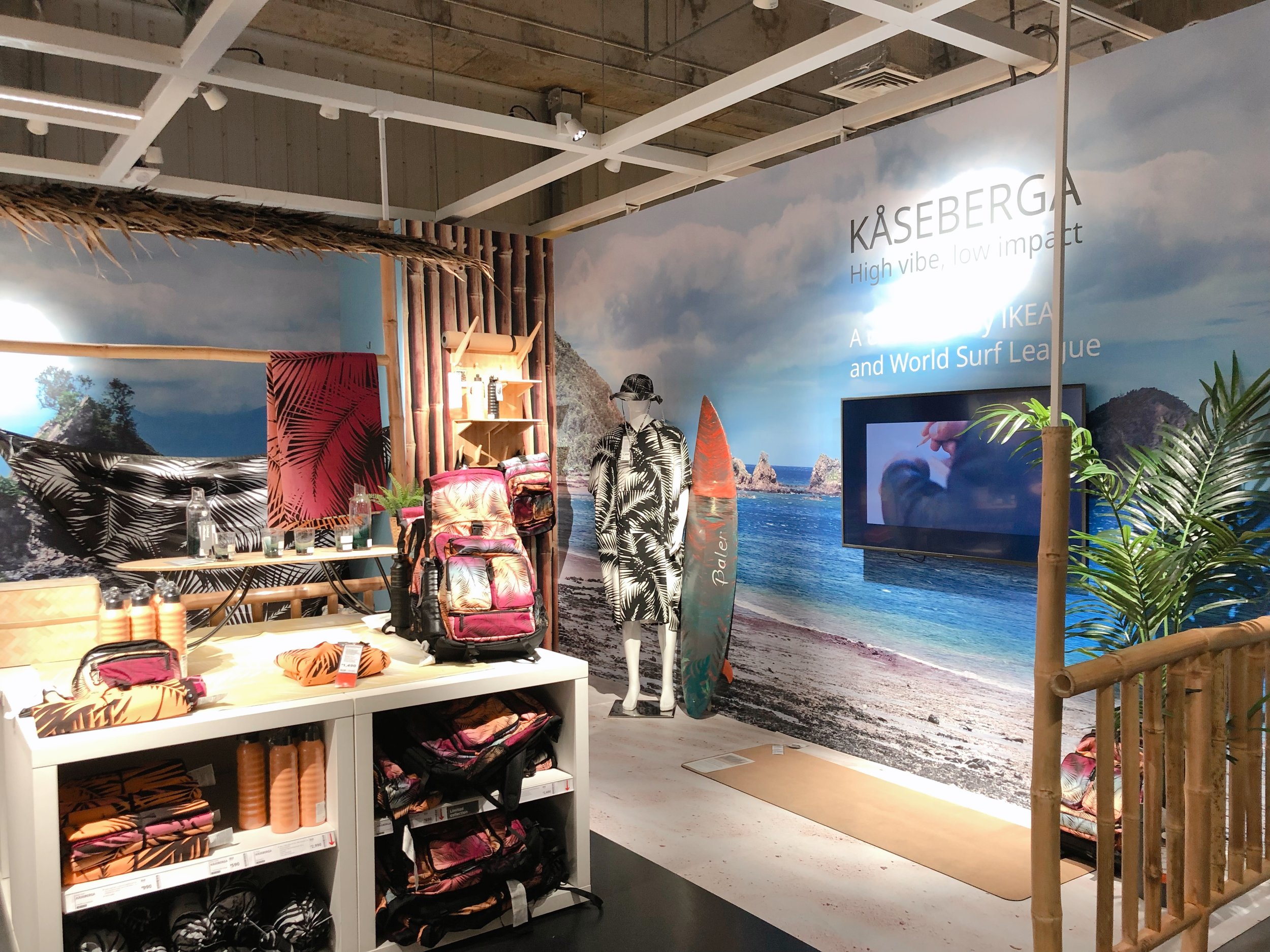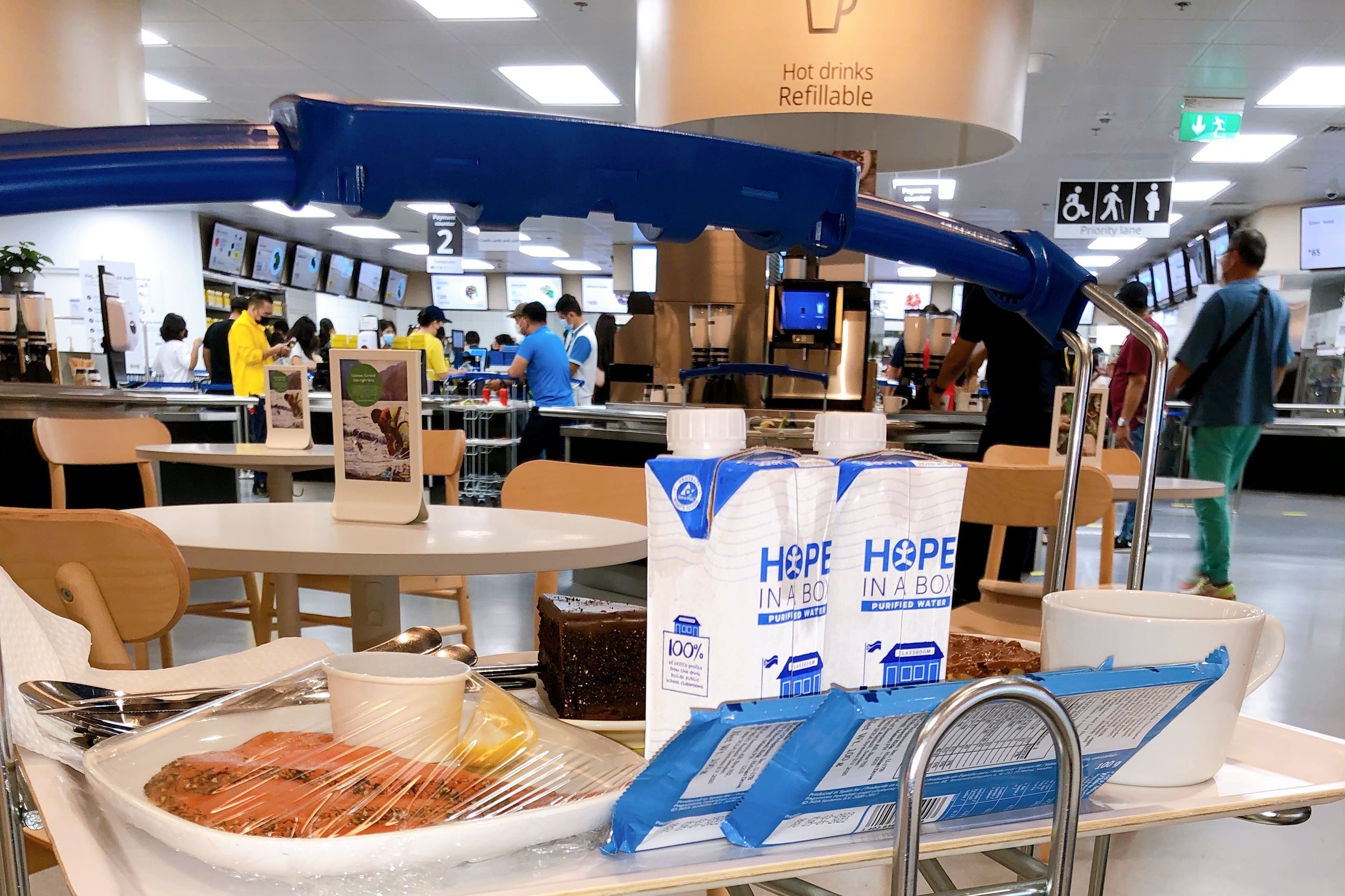Georg Platzer: Behind the Scenes with IKEA Philippines (Part 2)
Fun fact: Did you know that IKEA Pasay City is built in an earthquake zone? To construct an edifice that would stand up to the rigors of Mother Nature, the columns in IKEA are four times larger than the average columns used in European countries and measure 1.20 x 1.50 meters per column. This image is from ikea.com/ph.
Read on to find out what makes IKEA Pasay City undeniably Filipino.
IKEA Pasay City: The World's Largest
The imposing sixty-eight thousand square meter complex that makes the IKEA Pasay City the world's largest is a result of several factors, mainly due to logistic needs. It takes five to seven weeks for items to come in from the distribution center in Shanghai, China. Suppliers deliver products to Shanghai, which acts as a consolidation point. From there, the items are shipped to different countries in the Southeast Asia region, the Philippines being one of them. One of IKEA's philosophies is the ability to purchase everything you see in the store the very same day, with no waiting time. So how does IKEA buffer the possible delay in delivery? Come up with a space that allows you to store as many items as possible on site, and IKEA did just that. The colossal structure in Pasay houses not just the store alone. On top of the Showroom, IKEA Restaurant, Market Hall, and the Self-Serve Furniture Area lies two full floors, sixteen thousand square meters of storage space that operates as a warehouse.
IKEA room sets are created to suit every design need and style -- from kitchens to bedrooms, to bathroom accessories, everything you might want in your home. The store is the best place to look for home ideas that suit your unique lifestyle.
Moreover, IKEA Pasay City is the hub for e-commerce in the country, fulfilling all orders from this location. The Philippines is the ideal market for e-commerce, with eighty million smartphone users spending an average of eight hours online daily. Hence, running an online ordering system came naturally to Georg and his team. Also, with more than seven thousand one hundred islands in the Philippines, e-commerce allows Filipinos from far-flung places to buy IKEA products anytime, anywhere.
The IKEA e-commerce in the Philippines is explosive. First, it started catering to online customers in metro manila and some neighboring provinces, then progressed to Pampanga, Cavite, and Cebu. In time, IKEA aims to capture the big cities such as Cagayan De Oro, Iloilo, Baguio, and others by way of specific pickup points all over the country.
Don't make these empty lanes fool you because these can be filled with hungry people in a snap of a finger.
Lastly, it was calculated that there would be seven million yearly visitors. This would need a lot of room to accommodate the volume of people visiting the store every day. All these elements combined contributed to the landmark that is IKEA Pasay City.
Distinctly Filipino
I asked Georg what sets the Filipinos apart from other markets in the world, and he said: "What is really different is the number of people living in one household. It is beautiful to see two or three generations living under one roof and sharing the home in every aspect. Compared to other Southeast Asian countries, Filipinos are more in love with their home, spend a lot of time at home, and share the house with pride. Filipinos have a different approach to living compared to Malaysian and Thailand customers who prefer to go outdoors rather than Filipinos who prefer the indoors."
IKEA Pasay City opens its showroom with this undeniable Filipino space where Capiz details are incorporated into the window treatment.
As a part of their research, Georg and his team visited almost 800 Filipino homes from various walks of life and learned the demands of living with different people under one roof. For instance, distinct needs depend on the individual's age, which begins in the bathroom and ends in the bedroom, and how one uses specific rooms in the house throughout the day. These little details are reflected on the showroom's store vignettes that showcase all the living spaces.
Almost every Filipino home has a glass cabinet to store and display various memorable objects or knick-knacks, even those still in their packages. Georg adds, “The Filipinos take pride in their accomplishments and display certificates and medals rather than keeping them.” IKEA Pasay City produces a wide variety of display cabinetry that you are custom-made for you.
The tabo. A Filipino home will not be without it. Georg invited product developers from Sweden and China to the Philippines and went to Divisoria to see typical Filipino products, and the tabo was one of them. This simple bathroom piece is distinctly Filipino that IKEA now manufactures and sells in the store.
Surf’s up! Bring the feeling of the beach at home with the KÅSERBERGA collection, where IKEA teamed up with the World Surf League and created a line that embraces the surfer’s mindset. The range is made of renewable and recycled materials and addresses the planet’s global challenges while supporting a sustainable everyday life that revolves around water.
Food takes center stage in every Filipino home. Georg says it's fascinating and adds, "Of course, the love of food is crazy here. The love for food, love for cooking, eating five times a day with merienda, and even having a greeting that involves food, asking if you've already eaten, speaks a lot about the culture. The food culture in the Philippines is very exciting and different compared to other markets where food is enjoyed rather than a necessity. In the Philippines, eating is a social activity."
Filipinos truly love to eat, and the IKEA Restaurant can easily accommodate large crowds as it can sit one thousand one hundred fifty individuals at once.
Solutions for the Filipino
The Philippines is a hot and humid country where electricity can be pretty expensive. IKEA offers solutions to save airconditioning by using blackout curtains and blinds to block off sunlight to keep the room cool. There are also energy-saving light bulbs to help cut electricity costs. Seeing a single light source of 100wats in common areas is typical. The room displays demonstrate that by using different light sources with energy-saving bulbs, one can achieve a more convenient and comfortable ambiance while saving money.
If you look closely inside the IKEA’s room sets, you’ll find informational leaflets that help sort out specific problem areas in the home.
IKEA offers home solutions for maximizing dead spaces, such as those under the stairs that transform into a study area for children.
Filipinos tend to live in small spaces where there is always a need for proper storage. IKEA offers smart solutions in providing sufficient storage spaces by maximizing the room's height and wall space.
You can find a variety of styles in the IKEA showroom, from rooms with dark and moody walls to bright and airy living spaces.
Bedroom walls don’t have to be just one color. You can play around with having complimentary colors to create the focal point in the room.
Bestsellers
IKEA Philippines bestsellers are white furnishings. Filipinos gravitate toward everything white, perhaps because we grew up surrounded by traditional dark wood, which is still beautiful, that we used to see in our parent's homes. So, when the next generation decorates the house, they update the look using white furnishings.
IKEA offers a wide range of accessories that make each room stand out.
When it comes to food, it's the meatballs that take the cake, so to speak. Filipinos devour the meatballs in the restaurant at a remarkable rate; even Georg is astounded and remarks, "Oh, that is a story. People love our meatballs! It's meatballs, and there's nothing special about it - minced meat in the form of a ball. But somehow, the Swedish meatballs have become so famous, and I had to ask them why. They said they love the taste, and eating it is like going on a journey."
I couldn't leave IKEA without getting my fill of its bestsellers. Meatballs anyone?
Other bestsellers include salmon, pork knuckles, spareribs, and chicken wings. Surprisingly, the plant-based food repertoires are also well accepted, much more than ever imagined. Plant-based meatballs and hotdogs are also making waves among the locals. It's safe to say that the IKEA restaurant is a success story in itself, driven by the Filipinos' sheer passion for food.
The salmon was delectable, and of course, I had to grab the chocolate bars for some dessert on the go.
Tips and Tricks
A great tip that Georg shares when visiting IKEA is to take your time and never rush through the store. It is best to allot at least two hours in the store to look around in leisure. It's also good to come on a weekday morning to avoid crowds. Another tip is when walking around the store, follow the direction boards like those on an airport. When you follow the signs, you avoid getting lost. Lastly, do not forget to go to the restaurant before you leave. Lunchtime is packed with people, even on a weekday, so it's best to come in before the lunch hour rush.
The lines to the restaurant can get long quite fast. So it’s best to plan your visit ahead of time.
Georg's Philippine Journey
The Philippines is Georg's seventh country working for IKEA. His key takeaway thus far is to keep an open mind and stop comparing past experiences and reveals, "Focus on the beauty and not so much on the beast because there will be challenges. For me, the most challenging part in the beginning was the temperature and the humidity. I couldn't cope with the environment until I realized I had to adapt. I was living in a serviced apartment in Makati with my office a short ten-minute walk which was very convenient. At first, I was walking to the office the way Europeans do, which was very fast. However, in front of me, there was a wall of people that I tried to overtake like a slalom. I arrived after ten minutes in the office covered with sweat. It took me about two weeks to realize that I should walk with the people and go with the flow. Speed isn't always a good thing. Slow down and adopt the local habits." In addition, Georg adopted an unhurried pace and stopped walking on the escalators altogether, as Filipinos usually step on the escalators and wait.
This year marks the sixth year for Georg in the Philippines. He has been to different islands, namely Davao, Baguio, Siargao, Palawan, Panglao, Boracay, and Cebu, to name a few. He admits that his time here is cut short because of the restrictions of the pandemic and would've loved to see more places and eat more local dishes.
The Next Chapter
Georg works for IKEA as an expatriate with a fixed contract which generally lasts for five years, but with the delay, his contract was extended to seven years. With limited time in the Philippines, I asked where he would go next, and he replied, "I am in my sixth year, and my contract will expire; I need to move on. Where to go, I don't know yet. I still have ten good years in front of me, so maybe ten more years of working. Perhaps one more beautiful project somewhere in the world would be nice, but I really don't know yet."
We may not know where the next chapter will lead for Georg, but I know one thing for sure, I find it very hard to imagine that he would do anything mediocre. Especially after successfully leading the groundwork that built the largest IKEA on the planet. Georg Platzer outs the Midas touch for IKEA anywhere on earth, embodying the company's philosophy that has stood the test of time of creating a better world, one country at a time.
IKEA. For me, the name is synonymous with great furniture design, pieces that follow form and function at a fraction of the price. In addition, it is a brand that encompasses a unique lifestyle -- a personal way of living, and what it means to have a space that grows along with you, offering different home solutions that cater to specific needs. IKEA creates a better everyday life for many people; this is what they stand for regardless of where or how you live, anywhere in the world.


















